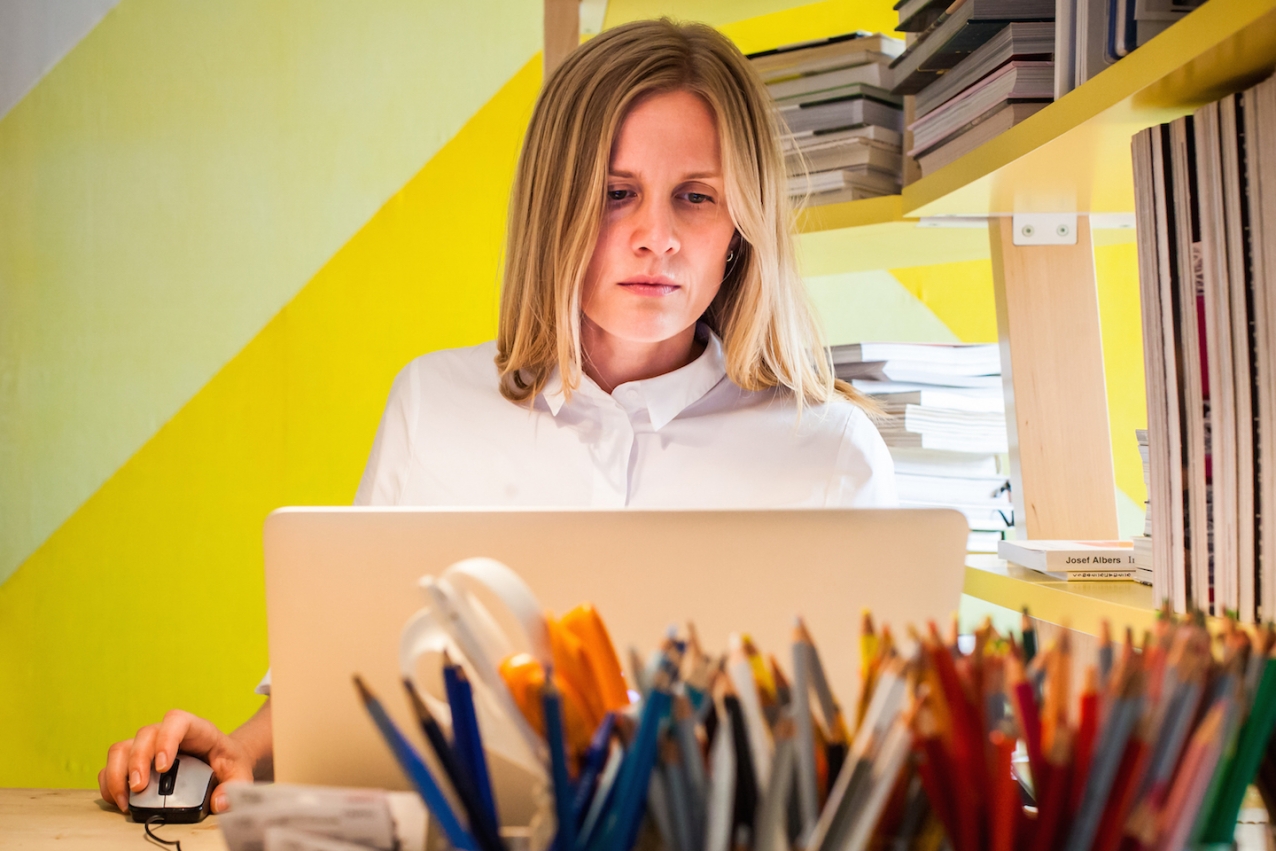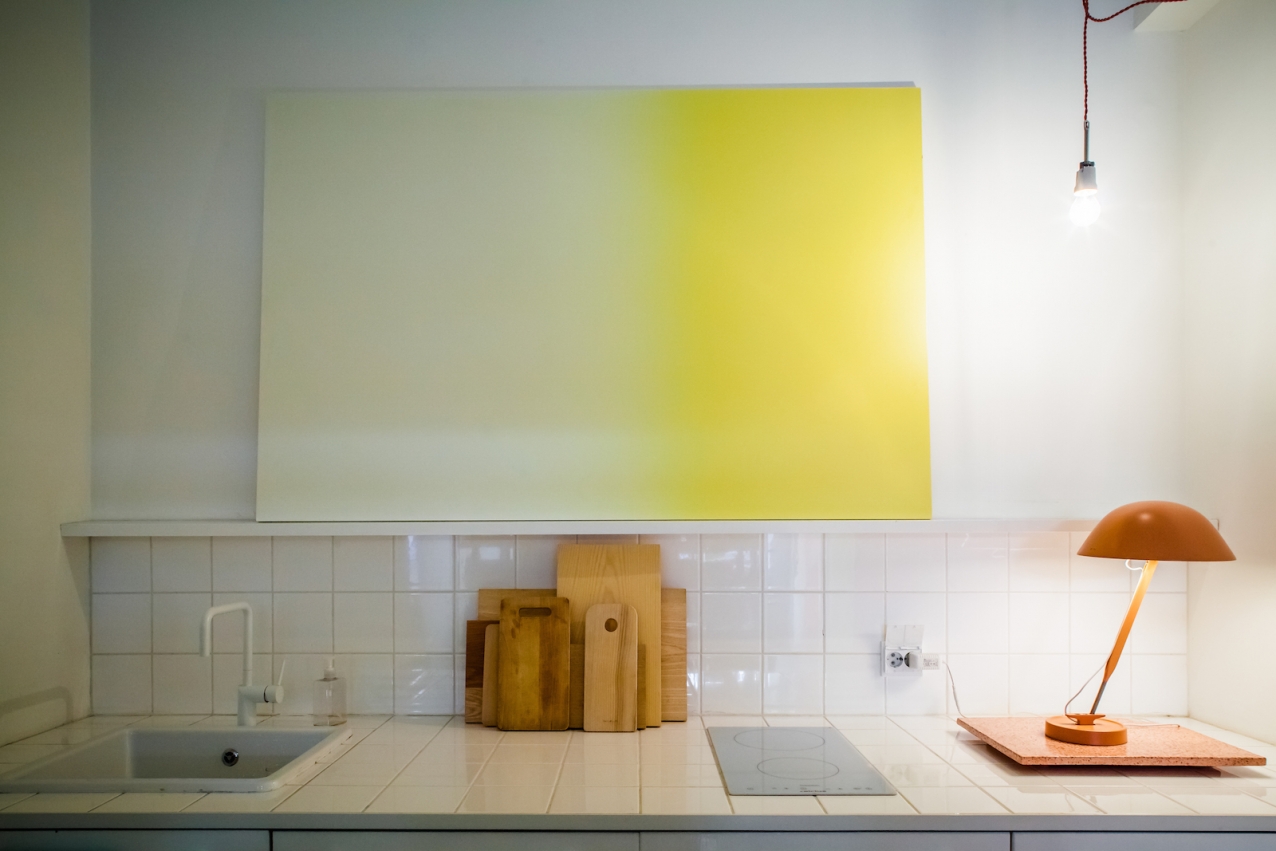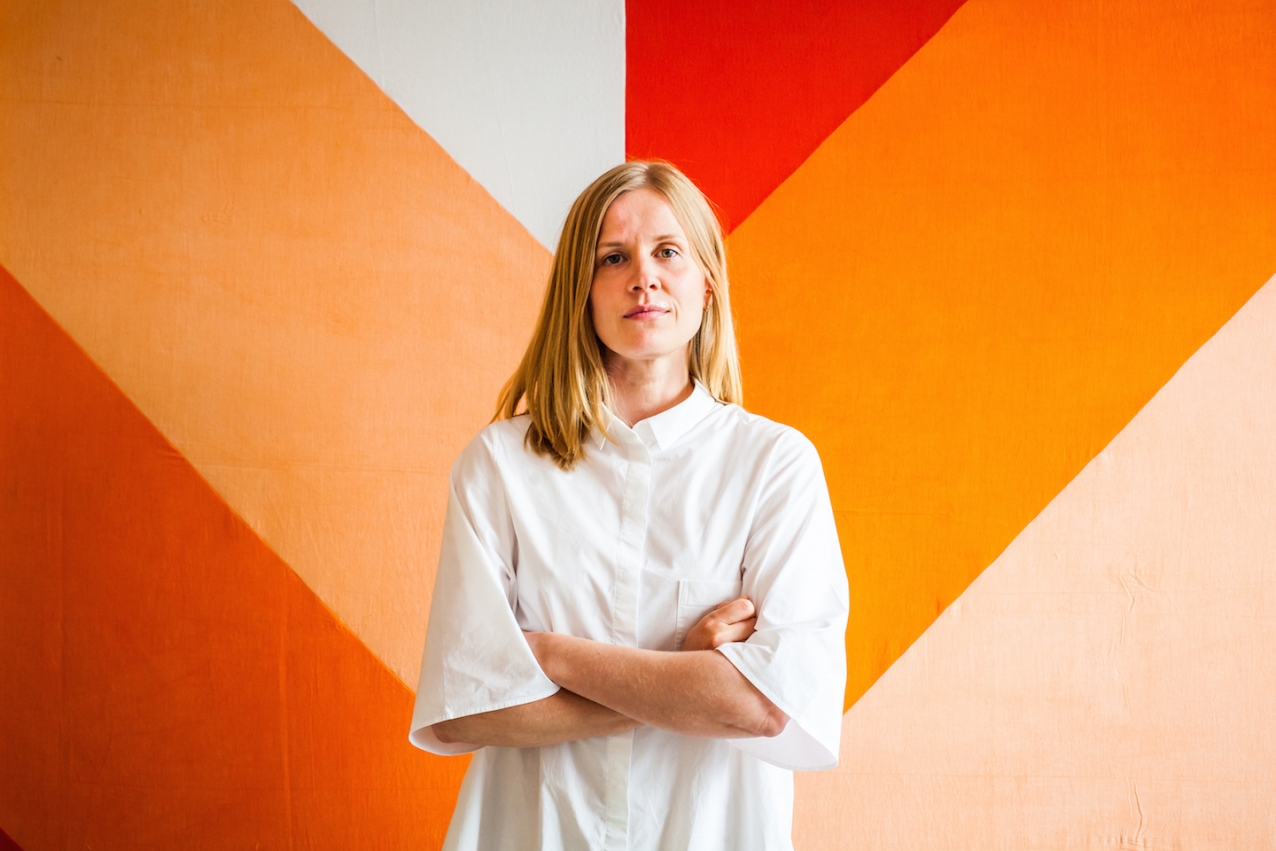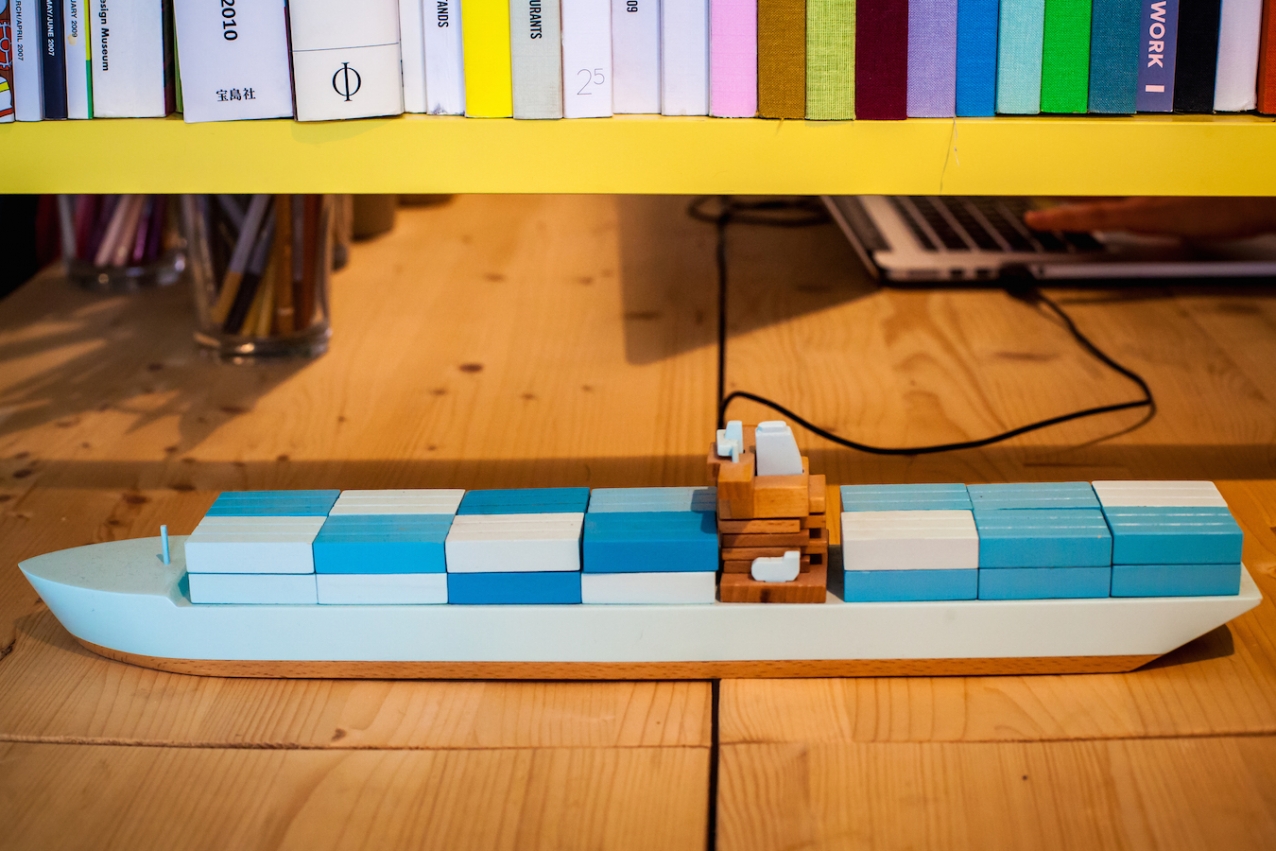Weekly Studio: Linda Bergroth

Weekly Studio presents interestings studios and their owners. This month, we with multi-disciplinary designer Linda Bergroth to discuss the balancing act between creative and commercial work, and the benefits of not having a website.
From product design to interiors, you’ve worked across a number of different kinds of projects. Could you say a little bit about your background and how this came to be?
I’ve always called myself a designer, but I think as my work has developed, it has become even more and more general. In the beginning, I did a lot of furniture design, interior design and set design, and now it’s even more or a mix of those and other kinds of projects.
That’s very interesting, though, especially because part of the idea with this series of studio visits is to be very expansive with the word ‘design’. It’s not about presenting the idea that design is only industrial design, but for example is also the design of skate parks, craft objects or rethinking performance of machinery for industrial companies. They grey areas are usually the most interesting and impactful.
I completely agree. So, my education in design is from TaiK, then I did interior and architectural design in Paris, before furniture design here. I’ve never worked for anyone else. It’s always been just me, and has developed in a very organic way.
In general, my biggest source of inspiration is cultural – contemporary art, architecture and travel. Lately, I’ve been working quite a lot on cultural projects, so working away from commercial industrial design.
As with the Rut Bryk exhibition design you recently worked on for EMMA?
Yes, exactly. I try to have a good balance between commercial work and more cultural, artistic projects. Some of the bigger commercial projects can take two years or more, so I like to also be working on shorter scenography projects which are kind of like my private workshops to develop creative ideas.

Has that balance been your intention from the beginning, or something that developed as you started working?
From the beginning, definitely. If you think of architecture and building projects, it’s an extremely expensive undertaking. In Finland, the people who are willing to invest money in projects of that scale are not especially willing to take risks.
They want to know exactly what they’re getting from the outset?
Yes. In past years, with the recession, there has been this nostalgic thing happening in interior architecture which I find such a shame. I think we should always be leaning to the future. That kind of retro, backwards-looking thing is so depressing. It’s too safe, but of course, it’s what always happens when there’s a recession and it tends to happen across all aspects of culture.
So, to have a space where I can test new ideas with the short-term projects for later use and adaption across the risk-averse long-term projects is really beneficial.
Can you talk specifically about a couple of projects which exemplify that balance between short-term and long-term working methods?
Recently, I did the scenography for Match Made in HEL, a Finnair and Finavia marketing project. The first version was held a couple of years ago, where a bunch of skateboarders were invited to skate on the runway and in the airport terminal.
That project was only shared through photographs, but this year, which was a fashion event, was open to a live audience of international press. Seven designers from around the world were invited to show on a runway on the airport runway. I wanted to have a very light, minimal construction for the runway using already existing elements found around the airport.
So, the concept focused on the idea of planes landing on the runway. All I did was park a plane – an Airbus A340 – on the runway. The models were all inside and then came down from the plane onto the runway. It was white, very simple, emphasising the common points between aviation and Finnish design.
I spend a lot of time at the airports and you’re never allowed on the runway, so it was great to be in these spaces where you aren’t normally allowed.
I also did the exhibition design for EMMA’s exhibition of Rut Bryk, one of my biggest idols in art and design. I was completely blown away when they called and asked me. I was like, ‘how did they know!’
Had you worked with EMMA before?
No, and it’s my favourite museum in Finland. I love the architecture. And then to work on the Rut Bryk exhibition was such an honour, but I haven’t done any exhibition design before and so I put quite a lot of pressure on myself to get it right.
Rut Bryk’s daughter, Maaria Wirkkala, was very involved in the exhibition and curator Harri Kalha told me that he had been writing the catalogue in his head for the last 20 years. And with Rut Bryk being my idol, it was such an emotional experience.
I was really happy to work on this project. I hope it will bring much greater recognition to her work. There’s still this kind of idea of her as Tapio Wirkkala’s wife, and I hope the exhibition helps to show that she was a great designer in her own right.


What about longer-term projects?
I’m working at the moment on something for next spring. It’s a bed and breakfast for the Finnish Institute in Paris, designed as a Finnish home. The idea is that French people and Parisian tourists can book up to three nights in this Finnish home via Airbnb.
The project is about the Finnish meaning of home and the way we share our homes with others. The story behind it is rooted in Finnish hospitality, specifically the experience of being in the summer cottage.
You go to the summer cottage, you get out of the car, and, without communicating someone goes to get water, someone starts peeling potatoes, someone gets the bonfire going.
Someone in France asked me, ‘So how do you just know what to do without communicating?’
In Finland, hospitality is about doing things together in nature. You don’t necessarily have to talk together. So the project is about how to bring people in Paris who don’t know each other together to experience the Finnish summer cottage way of life.
Are you using an existing building for the project or building something new?
Neither, really. It’s more of an installation in the existing space. I have designed the concept and the architecture of the installation.
I’ve also invited some Finnish designers and companies – Nikari, Lapuan Kankurit, Nathalie Lahdenmaki, among others. The installation will stay six months in Paris over the spring, and then it should be coming to Helsinki later in the fall.
That project is a nice link to the idea of Finnishness and Finnish aesthetics, which this series has also been looking at. Your position on this is also quite interesting as you primarily live in Paris. Do you feel like your work is representative of Finnish design aesthetics?
If I give interviews in Finland for Finnish press, they find it extremely interesting that I live in Paris. I don’t think it’s really that interesting. But somehow it does mean a lot to journalists. It’s easier to describe someone’s work by their background.
In France, people think I’m a Scandinavian designer. I use a lot of wood, I love wood. But at the same time, I use a lot of colour in a way that a lot of Finnish people are like, ‘How come everything is so yellow?’

I’m more thinking of, for example the Airbnb project or the garden shed you designed with Ville Hara, how much of your work feels rooted in certain Finnish cultural traditions, rather than aesthetics. Also, with respect to your critique of design tending to look backwards in times of recession. I feel like much of your work attempts to take these deeply-rooted Finnish cultural traditions and move them, materially, into the future. I think there remains an interesting relationship between these things, and while I know it can be irritating to feel labelled or defined by them, it’s also difficult to escape completely from one’s cultural background.
Yes, that’s certainly very true. In terms of the cultural background and experiences and very much in my way of thinking, it’s very Finnish. In Finland, you really need to justify your way of doing things. There always needs to be a reason, and I think that’s something very strong in my design thinking.
I can’t do this just-place-things-anywhere approach, for example.


What about materials? You mentioned that you love wood. Do you feel like you’re at a point where you have a set palette of materials you know and prefer to return to, or are you constantly seeking out new materials?
Well, for example take colours. What I like about my research with colours is that it feels like a never-ending thing. Mainly with materials, it’s about a sense of texture – how it feels to the hand and to the body.
If I think of what I wear, I tend to go for natural materials because I like the feeling of them. But of course you also have to consider the lifespan of materials and whether they patinate with time, rather than break. That’s why I like wood. You can endlessly repair or repaint wooden objects.
I think it’s more of a natural, unconscious choice to be honest. I’m not trying to be ecological, it’s just an ingrained behaviour.
We have a lot of old Aalto and Wirkkala furniture in the family that people have been adding layers of paint to and cutting down and changing over the years.
That’s also another interesting thing about the Finnish design culture. Because so many people grew up with these design objects as “normal” objects, use tends towards every-day and utilitarian rather than precious. It’s not a great crime of destruction to paint them or chop the legs off or whatever.
Yes, we don’t really buy for iconic status here in Finland. It’s so much more about utility.
In terms of your work, are most of your clients here in Finland or abroad?
Most of my clients are here, I think because I’m from here and studied here. Most of my contacts are here. It’s funny because I have never once called anyone and said that I want to work together. Mostly I’m just answering the phone. It’s not necessarily the best way to go about building an office, but that’s how it’s been for me.
My mother is an interior design and my husband is an architect, and they both have their own businesses. Those have been the models in my life. One of the most important things for me is that I have freedom, but also that I can be personally involved in the projects I take on.
I hire assistants per project which allows me to maintain that freedom. For me, maintaining a bigger office just isn’t the right direction.
And I’m not the only one.
More and more, I think that the old structure of maintaining a big office is something from a kind of past world. Now, everyone buys services from other freelance designers. I think that’s really where things are going.

Do you feel like your career would have been completely different if you had been more pro-active in seeking out commissions?
Oh, completely. In reality, think I really should start doing that. We can all change!
That’s interesting, because there are so many different views about building a practice. Some people think it’s a mark of greatness to never have had to make pitches, but then without direction you can end up being blown around in the wind a bit.
I hate to say this kind of thing, because it sounds a little bit like I’m outside looking in, which is obviously not the case, but I think nowadays there’s so much self-promotion among young designers. I think I became who I am as a designer when I found my own voice, my own way of thinking.
I’m not sure how possible it is to find that voice when you’re spending all of your time marketing yourself on the internet.
I still don’t have a website. I’m kind of an anti-marketing person, which ironically is also connected to how I’ve worked and how I’ve gotten work. I always feel it’s more interesting to show your way of thinking through the work itself.
I think for a lot of creative people, it would be better to be more off the radar and develop their own thinking and their own body of work before shouting at the world. So, give me a couple more years and maybe I will finally make a website.